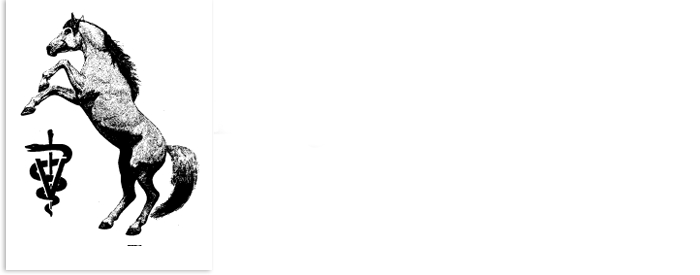Cribbing and Wind Sucking
During wind sucking or cribbing horses grab a fixed surface with the upper teeth, arch their necks, and suck in air. Cribbing and wood chewing are frequently the same. Many horses will not even grab an object with their teeth, but will pull down their chin in against a stall door and suck air at the same time. This abnormal behavior is probably brought on by boredom or frustration or by observing other horses wind sucking, or accidentally discovering the action when playing. Wind sucking apparently creates a pleasurable sensation. Supportive evidence for this theory was gathered at Tufts University School of Veterinary Medicine, Boston, MA. There, researchers were able to dramatically decrease the amount of cribbing behavior in several horses by injecting the horses with Morphine blocking agents. The implication of this approach is that cribbing led to a release of internal opiate like substance called endorphins. Once the effects of the endorphins were diminished by the blocking agent, the horses no longer gained the pleasurable feeling from the activity and stopped cribbing.
Once a horse learns to perform the behavior he continues to do so unless aversive apparatus are used to prevent the activity. The major problems associated with cribbing include destruction to stalls and fencing, excessive development of muscles on the underside of the neck, a problem maintain proper weight, and colic. Once the habit of cribbing is ingrained in horses, their destructive ability is astounding. Many a cribbing horses will weekly chew through the upper board on a stall door or wall. It has been noted in many chronic cribbing horses that their obsessive cribbing behavior leads to a decrease intake of food and/or excessive burning off of the food they do get. It has been my experience in these horses that no matter what food is given, weight gain is only possible when control of the cribbing behavior is implemented. Also, although it has not yet been proven, it is my clinical impression that chronically cribbing horses suffer from an increased incidence of low-grade gas colic.
Control of cribbing is divided into behavioral, mechanical and surgical measures. Providing a chronic cribbing horses with a companion such as a goat or small pony will often reduce the behavior. Changing stabling from a stall to a pasture will similarly often dramatically reduce cribbing. Some horses respond to metal mirrors placed in their stall. Others my respond to the availability of chew toys. The best response to the above methods is seen in horses in which the habit has recently developed.
When the habit is firmly ingrained, it is virtually impossible to stop without either mechanical or surgical means. In some horses placing a snug leather strap around the throatlatch area is enough to control the behavior. Care must be taken to avoid interference with airways. The strap allows the horse to eat but inhibits the ability to arch the neck and engage the muscles involved in sucking air. There are more severe cribbing straps that included points and chains. My personal opinion of these devices is that they are torture devices that injure the horse. They do not seem to work in any horse that does not respond to a simpler leather strap.
The BEST means I have seen is the use of cribbing cages. These metal cages have a series of parallel vertical bars that allow the horse to grasp and eat food but prevent the horse from grasping onto a piece of wood or fencing on which to crib. I refer my clients to Rainwood Stable, Inc. in Omaha Nebraska (402) 571-1901. The cage they make runs about fifty dollars and has proved itself on several patients.
The last alternative therapy is surgical. By cutting a muscle and nerve in the neck a 70 to 80 % success rate has been seen. The surgery does not disfigure the horse. In a follow-up survey of 10 horses that appeared to be cured by the surgery, it seemed that the surgery worked best in horses that were young and who had exhibited cribbing behavior for less than one year.

